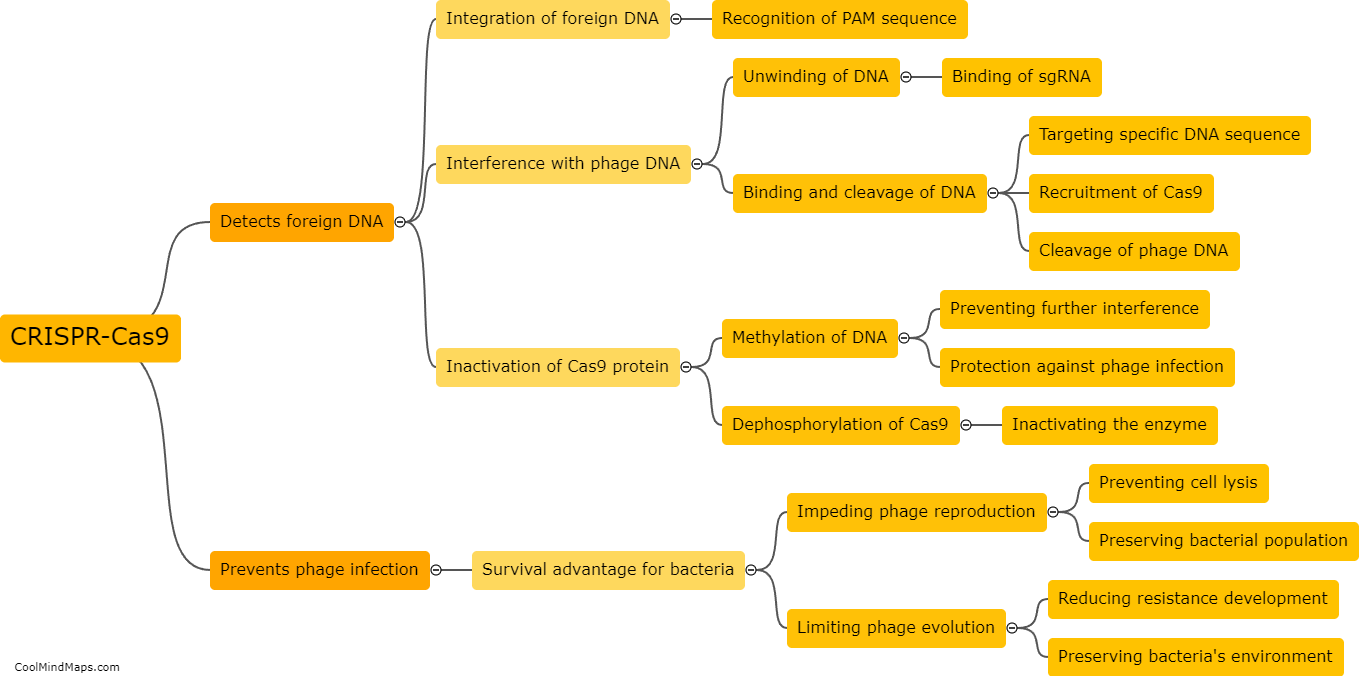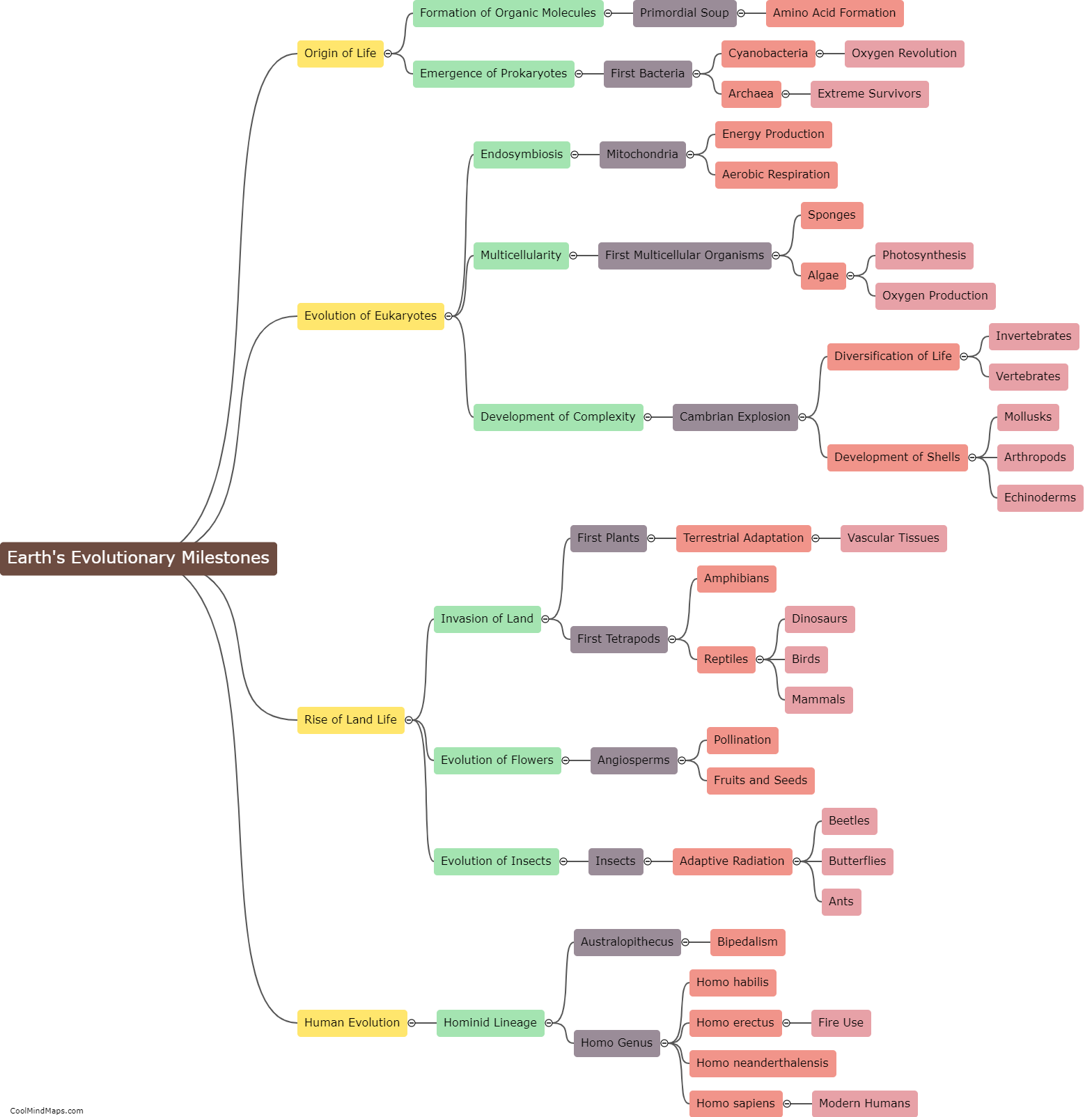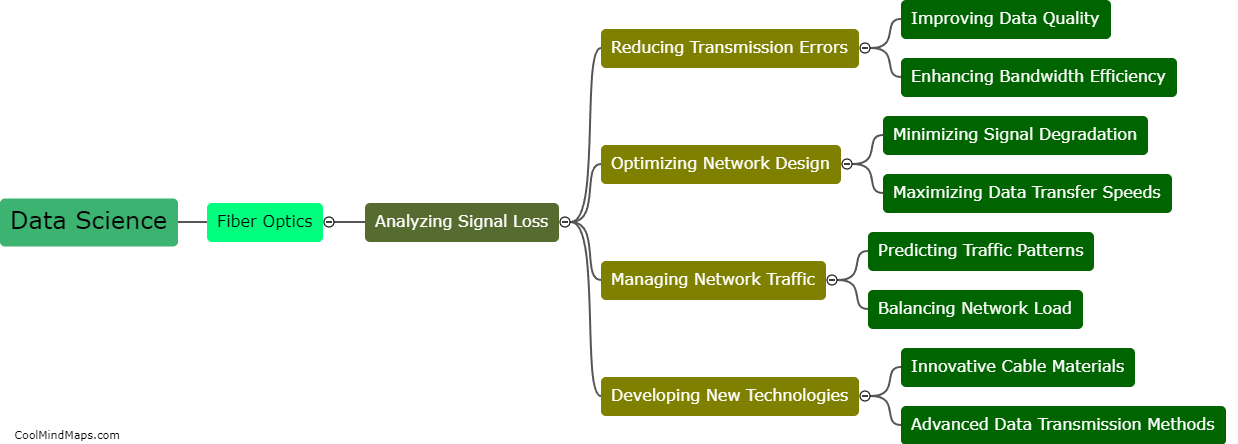What are the mechanisms of CRISPR-Cas9 in fighting bacteriophages?
CRISPR-Cas9 is an adaptive immunity system found in bacteria and archaea that helps them defend against invading bacteriophages, also known as viruses that infect bacteria. The CRISPR-Cas9 system consists of two key components: a CRISPR array, which stores small pieces of viral DNA as genetic memories, and the Cas9 protein, which acts as a molecular scissor. When a bacteriophage attacks, the CRISPR array is transcribed into small CRISPR RNAs (crRNAs) that guide Cas9 to specific regions on the viral DNA. Cas9 then cuts the viral DNA at those targeted sites, effectively disabling the bacteriophage's ability to infect the host bacteria. This targeted and precise mechanism allows bacteria to tailor their immune response to different viral threats and provides an effective defense against bacteriophages.

This mind map was published on 10 November 2023 and has been viewed 87 times.











